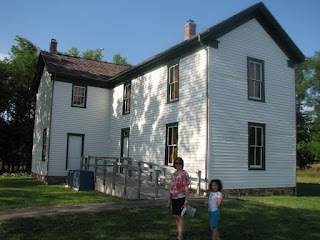The Second Battle of Manassas was fought from August 28-30, 1862. After General Stonewall Jackson and his troops torched Union supplies at Manassas Junction, he was pursued by Gen. John Pope. Jackson's troops attacked a division of Union forces at Brawner Farm on the evening of Aug. 28th. Trying to keep the Confederate forces from escaping, Gen. Pope attacked Jackson's position throughout the day on Aug. 29. Although several of the attacks pierced Jackson's line, each one was eventually repulsed. Gen. Robert E. Lee arrived with General Longstreet's command on the 29th, blocking the arrival of Union reinforcements under the command of Fitz John Porter. On Aug. 30th, Pope continued his attempts to break the Confederate line. This time, however, Lee and Longstreet launched a major counterattack. The counterattack stalled after Union forces mounted a staunch defense on Chinn Ridge, buying Pope enough time to shift enough troops onto Henry Hill and stave of disaster. After dark, Pope's forces retreated, ending the battle, yet another victory for the Confederacy.
 |
| Monument to honor those who died at Manassas |
Cost: free, but donations are accepted
Time: The battlefield is open from dawn to dusk. The Henry Hill Visitor Center is open from 8:30 - 5:00. Plan on spending 1-3 hours depending on your level of interest.
Description: Guided tours of the battlefield start at the Henry Hill Visitor Center. Tours alternate between sites from First Manassas and Second Manassas. Even without an official tour, visitors can explore the battlefields at their leisure, reading the interpretive signs along the way.
The current Brawner Farmhouse doesn't appear to be the one that was there during the Civil War. Archaeologists have discovered the remains of an older building underneath the current one, which is probably the one that existed at the time of the war. Nevertheless, the current structure underwent heavy restoration to restore it to its early 1900's appearance. Inside, the house is used as an interpretive center.
 |
| Brawner Farmhouse |
 |
| The Stone House |
Rating: 3 stars (out of 5) - although potentially higher since we were limited on time
Things You Should Know: - Living history actors perform infantry and artillery demonstrations at Chinn Ridge on select dates throughout the year including Memorial Day and the anniversaries of the battles.
- Brawner Farm Interpretive Center and the Stone House are closed in the winter.
- When you see a statue of a mounted commander on a battlefield, the horse's legs will indicate what happened to the rider. If both legs are in the air, the rider died in battle. If one leg is in the air, then he died of wounds suffered in the battle. If all legs are on the ground, the rider survived the battle.
Nearby: Ben Lomond Historic Site, Fountainhead Regional Park, Shenandoah National Park, Arlington National Cemetery



No comments:
Post a Comment